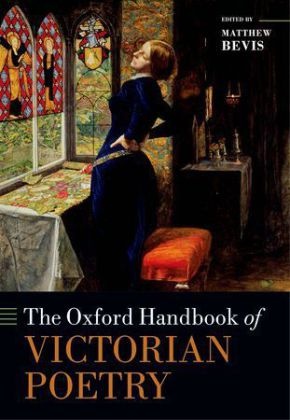Read more
Zusatztext Bevis's editorial work combines rigour with play ... [he] gives us a book which is united by its refusal to conform to any one pattern or mould ... The essays [on form] ... are full of flair and reflexive comedy ... The section on 'Literary Landscapes' impresses with its originality and strength ... Bevis's volume is particularly strong for the way in which it unsettles chronological and generic boundaries ... The final section on 'The Place of Poetry' offers intriguing collisions ... Perhaps the greatest pleasure of this book is the editor's resistance to simplification ... The Handbook can act as a useful scholarly touchstone, but it is much more than this. Informationen zum Autor Matthew Bevis is a University Lecturer and Fellow in English at Keble College, Oxford. He is the author of The Art of Eloquence: Byron, Dickens, Tennyson, Joyce (OUP, 2007) and Comedy: A Very Short Introduction (OUP, 2012). He is the editor of Some Versions of Empson (OUP, 2007). Klappentext The Oxford Handbook of Victorian Poetry offers an authorative collection of original essays and is an essential resource for those interested in Victorian poetry and poetics. Zusammenfassung 'I am inclined to think that we want new forms . . . as well as thoughts', confessed Elizabeth Barrett to Robert Browning in 1845. The Oxford Handbook of Victorian Poetry provides a closely-read appreciation of the vibrancy and variety of Victorian poetic forms, and attends to poems as both shaped and shaping forces. The volume is divided into four main sections. The first section on 'Form' looks at a few central innovations and engagements -- 'Rhythm', 'Beat', 'Address', 'Rhyme', 'Diction', 'Syntax', and 'Story'. The second section, 'Literary Landscapes', examines the traditions and writers (from classical times to the present day) that influence and take their bearings from Victorian poets. The third section provides 'Readings' of twenty-three poets by concentrating on particular poems or collections of poems, offering focused, nuanced engagements with the pleasures and challenges offered by particular styles of thinking and writing. The final section, 'The Place of Poetry', conceives and explores 'place' in a range of ways in order to situate Victorian poetry within broader contexts and discussions: the places in which poems were encountered; the poetic representation and embodiment of various sites and spaces; the location of the 'Victorian' alongside other territories and nationalities; and debates about the place - and displacement - of poetry in Victorian society. This Handbook is designed to be not only an essential resource for those interested in Victorian poetry and poetics, but also a landmark publication -- a provocative, seminal volume that will offer a lasting contribution to future studies in the area. Inhaltsverzeichnis Introduction: At Work with Victorian Poetry Form 2. : Michael Hurley: Rhythm 3. : Derek Attridge: Beat 4. : Robert Douglas-Fairhurst: Address 5. : Matthew Campbell: Rhyme 6. : Garrett Stewart: Diction 7. : Isobel Armstrong: Syntax 8. : Herbert Tucker: Story Literary Landscapes 9. : Isobel Hurst: Victorian Poetry and The Classics 10. : Matthew Townend: Victorian Medievalisms 11. : Erik Gray: Victorian Miltons 12. : Bharat Tandon: Victorian Shakespeares 13. : Michael O Neill: The Romantic Bequest: Arnold and Others 14. : Elisa New: American Intersections: Poetry in the United States 1837-1901 15. : Peter Robinson: The Poetry of Modern Life: On the Pavement 16. : Adam Piette: Modernist Victorianism 17. : David Wheatley: Dispatched Dark Regions Far Afield and Farther : Contemporary Poetry and Victorianism Readings 18. : Caroline Levine: Rhyme, Rhythm, Violence: Elizabeth Barrett Browning on Slavery 19. : Ruth Padel: Tennyson: Echo and ...

